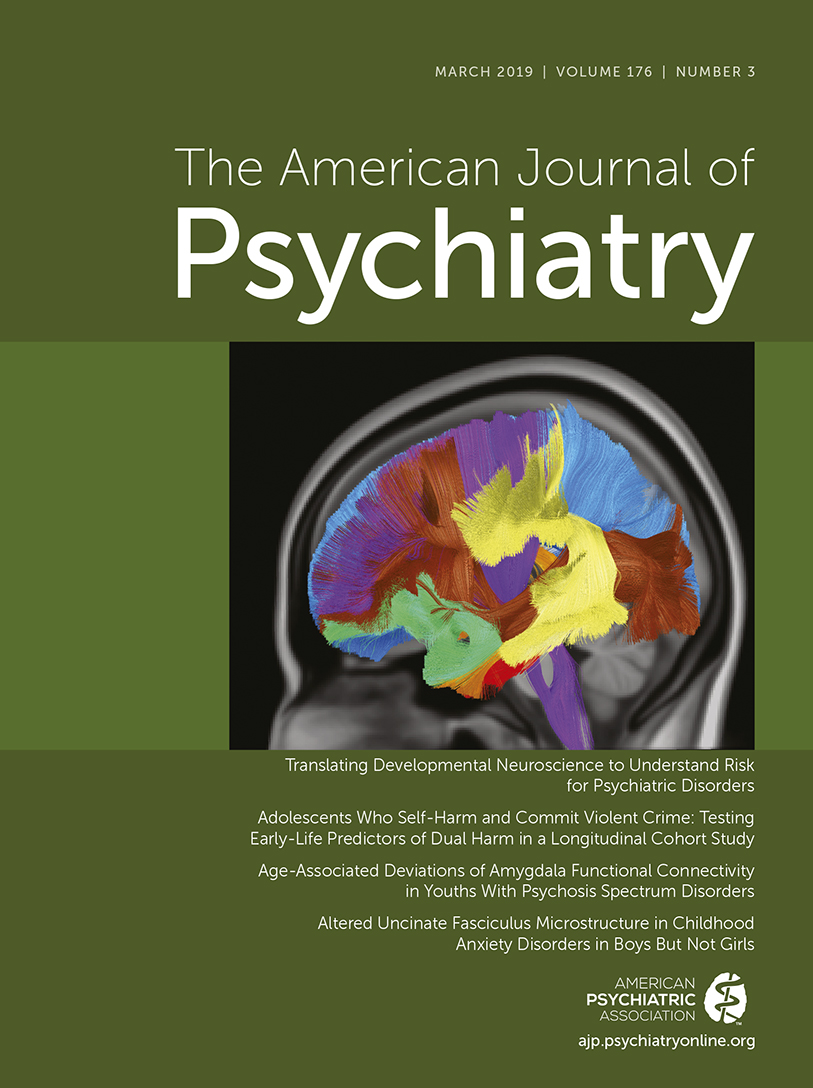Age-Associated Deviations of Amygdala Functional Connectivity in Youths With Psychosis Spectrum Disorders: Relevance to Psychotic Symptoms
Abstract
Objective:
The authors created normative growth charts of amygdala functional connectivity in typically developing youths, assessed age-associated deviations of these trajectories in youths with psychosis spectrum disorders, and explored how these disruptions are related to clinical symptomatology.
Methods:
Resting-state functional neuroimaging data from four samples (three cross-sectional, one longitudinal) were collected for 1,062 participants 10–25 years of age (622 typically developing control youths, 194 youths with psychosis spectrum disorders, and 246 youths with other psychopathology). The authors assessed deviations in the psychosis spectrum and other psychopathology groups in age-related changes in resting-state functional MRI amygdala-to-whole brain connectivity from a normative range derived from the control youths. The authors explored relationships between age-associated deviations in amygdala connectivity and positive symptoms in the psychosis spectrum group.
Results:
Normative trajectories demonstrated significant age-related decreases in centromedial amygdala connectivity with distinct regions of the brain. In contrast, the psychosis spectrum group failed to exhibit any significant age-associated changes between the centromedial amygdala and the prefrontal cortices, striatum, occipital cortex, and thalamus (all q values <0.1). Age-associated deviations in centromedial amygdala–striatum and centromedial amygdala–occipital connectivity were unique to the psychosis spectrum group and were not observed in the other psychopathology group. Exploratory analyses revealed that greater age-related deviation in centromedial amygdala–thalamus connectivity was significantly associated with increased severity of positive symptoms (r=0.19; q=0.05) in the psychosis spectrum group.
Conclusions:
Using neurodevelopmental growth charts to identify a lack of normative development of amygdala connectivity in youths with psychosis spectrum disorders may help us better understand the neural basis of affective impairments in psychosis, informing prediction models and interventions.



